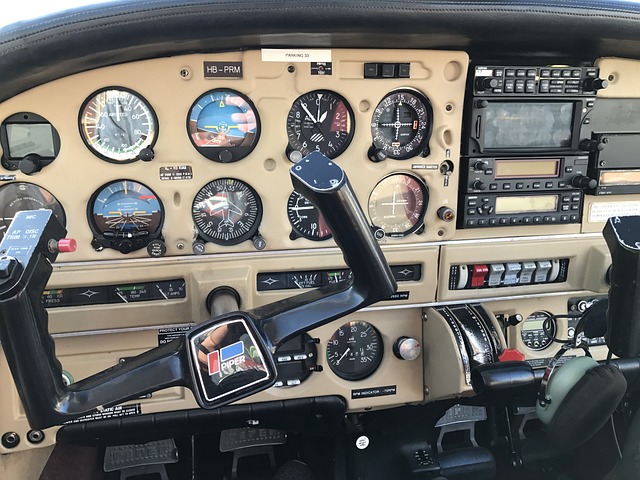Start Aviation Training in the US Today
Ready to turn your dream of flying into a career? The United States offers some of the most respected aviation training programs in the world. From beginner flight lessons to advanced commercial pilot certification, U.S.-based schools provide structured, FAA-approved pathways for both domestic and international students. This guide will walk you through the steps to get started, including how to choose a flight school, meet entry requirements, understand visa processes, and budget for your training.

How to Choose the Right Aviation School in the United States
Selecting an aviation school is one of the most crucial decisions in your pilot training journey. The United States hosts hundreds of flight training institutions, ranging from university aviation programs to specialized flight academies. When evaluating schools, consider their FAA certification status, fleet condition, instructor qualifications, and job placement rates.
Look for schools with Part 141 certification, which indicates they meet strict FAA standards for curriculum and training procedures. Part 61 schools offer more flexibility but may take longer to complete. Research the school’s aircraft maintenance records, student-to-instructor ratios, and available aircraft types. Many successful aviation schools also maintain partnerships with airlines, providing direct pathways to employment after graduation.
Understanding the FAA Certification Process for New Pilots
The Federal Aviation Administration oversees all pilot certification in the United States through a structured system of licenses and ratings. New pilots typically start with a Private Pilot License (PPL), which requires a minimum of 40 flight hours, including specific training in various flight conditions and maneuvers.
The certification process involves both written examinations and practical flight tests with FAA-designated examiners. Students must demonstrate proficiency in navigation, weather interpretation, aircraft systems, and emergency procedures. After obtaining a PPL, pilots can pursue additional ratings like Instrument Rating (IR) and Commercial Pilot License (CPL), each building upon previous knowledge and skills.
Documents and Requirements You Need to Start Training
Before beginning flight training in the United States, you’ll need to gather several essential documents and meet specific requirements. All students must obtain a medical certificate from an FAA-authorized medical examiner, with the class of medical depending on your intended pilot career path.
U.S. citizens need a government-issued photo ID and proof of citizenship or legal residency. International students require additional documentation, including passport verification and completion of the Transportation Security Administration’s background check process. Students must also demonstrate English proficiency, as all aviation communications occur in English. Some schools may require high school completion or equivalent educational credentials.
Visa Options for International Aviation Students
International students pursuing aviation training in the United States have several visa options, with the M-1 vocational student visa being the most common for flight training programs. The M-1 visa is specifically designed for students attending vocational or technical schools, making it ideal for aviation training that focuses on practical skills rather than academic study.
Students enrolled in university aviation programs typically use F-1 academic student visas. Both visa types require acceptance at a Student and Exchange Visitor Program (SEVP) certified school and proof of financial support for the entire training duration. The application process can take several months, so international students should begin visa preparations well before their intended start date.
Calculate Training Costs and Plan Your Aviation Career Path
Aviation training represents a significant financial investment, with costs varying considerably based on the type of certification, school location, and training intensity. Understanding these expenses helps you plan your budget and explore financing options available in your area.
| Training Level | Estimated Cost Range | Duration | Key Requirements |
|---|---|---|---|
| Private Pilot License (PPL) | $8,000 - $15,000 | 3-6 months | 40 flight hours minimum |
| Instrument Rating (IR) | $12,000 - $20,000 | 2-4 months | PPL prerequisite |
| Commercial Pilot License (CPL) | $15,000 - $25,000 | 4-8 months | 250 flight hours total |
| Airline Transport Pilot (ATP) | $5,000 - $10,000 | 2-4 weeks | 1,500 flight hours total |
| Complete Zero-to-Airline Program | $80,000 - $200,000 | 18-24 months | Medical certificate required |
Prices, rates, or cost estimates mentioned in this article are based on the latest available information but may change over time. Independent research is advised before making financial decisions.
Career progression in aviation typically follows a structured path from private pilot to commercial airlines. Many pilots build flight hours through instruction, charter flights, or regional airlines before qualifying for major airline positions. The current pilot shortage in the United States has created excellent job prospects, with many airlines offering signing bonuses and accelerated career advancement opportunities.
Planning Your Aviation Training Timeline
Successful aviation training requires careful timeline planning, especially for international students managing visa requirements and financial constraints. Most students complete private pilot training within three to six months when training consistently, though weather, aircraft availability, and personal schedules can affect progression.
Full-time training programs offer the fastest route to certification but require significant time commitment and financial resources. Part-time training allows students to maintain other commitments but extends the overall timeline. Consider seasonal weather patterns in your chosen training location, as consistent flying conditions accelerate learning and reduce overall costs.
The United States provides unparalleled opportunities for aviation training, combining world-class instruction with diverse flying environments and excellent career prospects. By carefully selecting your school, understanding certification requirements, preparing proper documentation, and planning your finances, you can successfully launch your aviation career in one of the world’s most dynamic aviation markets.




